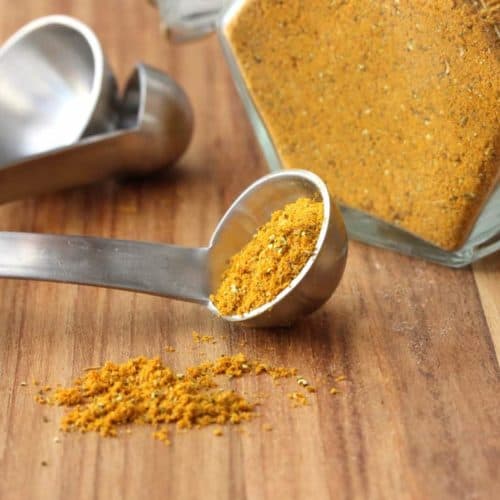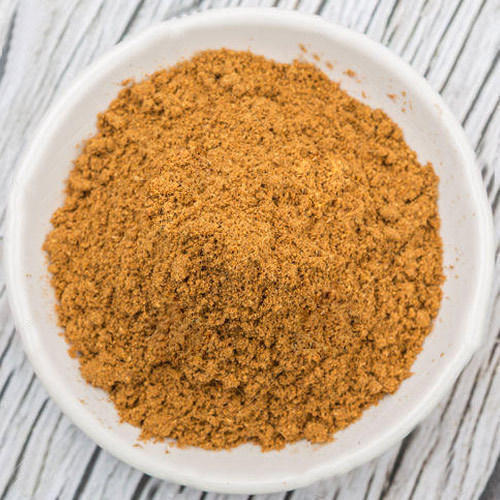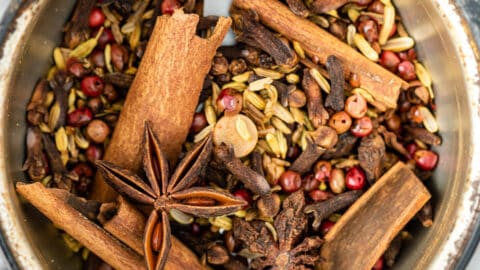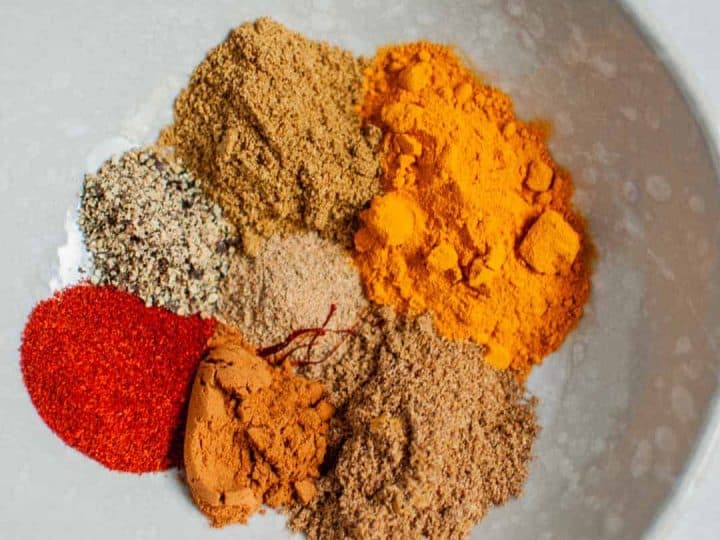Substitutes for Curry Powder: 10 Best Alternatives, Recipe, +FAQs!

Curry powder is a spice blend commonly used in Indian recipes by the British and Americans. If you don’t have any curry powder on hand, use a pinch of cayenne pepper instead. If you don’t have this spice combination in your cupboard, we’ve compiled a list of possible replacements.
Sambar powder, tandoori masala, garam masala, chaat masala, curry paste, cumin powder, allspice, Chinese 5 spice, turmeric, and coriander are just a few of the best curry powder substitutes.
Learn more about curry powder and what alternates you can use by reading this article.
Alternatives to curry powder

Curry powder can elevate a meal to new heights.
You won’t need any additional spices in your curries if you only have this powder in your pantry. If you’re out of it and want to eat something Indian, try one of the replacements listed below, which will give you similar effects.
No. 1 Powdered sambar
Sambar powder is a blend of several spices found in curry powder.
Black gram, coriander seeds, chilies, cumin, curry leaves, fenugreek seeds, peppercorn, turmeric, and some Indian legumes, including yellow split peas and Bengal gram, make up this powder.
Because sambar is similar to curry and is served with rice, dosa, and idli, it’s a decent substitute for curry powder. Because sambar powder is more aromatic than curry powder, use half the sambar powder to replace it.
It can be used in stews, meats, seafood, and soups to give them a more natural flavor.
No. 2 Masala tandoori
Tandoori masala is a delicious spice blend that you may use with butter chicken.
It will be the most exquisite dish if you put this spice on pork, poultry, or cottage cheese. Fenugreek seeds, nutmeg, mace, cardamom, and garlic are among the flavors found in curry powder.
It has a robust flavor and a substantial amount of chili. So, if you’re going to use it instead of curry powder, make sure you use half the amount.
Tandoori masala and curry powder have nearly identical flavors, making them an excellent replacement.
No. 3 Garam masala
Garam masala is known as the finisher masala since it is added after being prepared. It’s popular in North Indian cuisine and used in dry as well as curry or gravy-based dishes.
You can easily substitute garam masala for the same amount of curry powder. It will give the dish a practically identical flavor.
Garam masala is a milder version of curry powder. As a result, if you want a mild curry, garam masala can be used.
No. 4 Masala chaat

You can also replace curry powder with chaat masala. In addition to all of the spices found in curry powder, it also contains mango powder, a slightly sweet and lemony flavor. Overall, chaat masala is a sweet spice, so you’ll need to balance it with other spices when using it in a meal. To balance the flavor, add a little chili. While substituting, it can be used as a last resort. It’s delicious in curds and salads, but not so much in curries.
No. 5 Curry paste
Curry paste is not the same as curry powder. It is created with vegetable oil, ginger and garlic paste, red chilies, and lime, despite the same ingredients.
Curry paste has a strong, deep flavor commonly seen in Thai curries. Since curry powder is a powder, it lacks all of these. You can use the paste in curries, but first, dilute it with water to neutralize the flavor. You can, however, use it in place of curry powder. Just be sure to use a small amount and dilute it before using it in the curry.
No. 6 Chili powder and cumin powder
Curry powder and cumin powder are not the same things.
It’s a flavor-enhancing spice found in curry powder. As a result, utilizing it alone in the dish would waste time. If you don’t have any curry powder, you can use chili and black pepper. Cumin powder has an earthy flavor similar to garam masala. As a result, you can use this spice with chili to create a curry powder-like flavor.
No. 7 Allspice
Allspice is a warming and earthy spice blend made with nutmeg, clove, and cinnamon. You can use it in place of curry powder by adding 1/4 teaspoon for every teaspoon of curry powder.
Curry powder has different flavors, but you may find the warm earthy flavors of Allspice in curries. To match the flavor profile, you’ll need to add chili and turmeric.
No. 8 Turmeric, coriander, and all-purpose seasoning
Allspices, when mixed with turmeric and coriander, make for a great curry powder replacement. Curry powders contain these three flavors so that you can get a close match with them. If you add these to your curry, you won’t need any other flavors.
No. 9 Spices of China

Sweet, sour, bitter, and salty are all covered by Chinese 5 Spice.
As a result, this can be a different but still good curry powder option. The ingredients are Star anise, peppercorns, fennel seeds, cloves, and cinnamon. All of these flavors are warming and invigorating to the dish.
Because there are so many various types of curries, the flavors of the Chinese 5 Spice enhance each dish. As a result, it can be used as a curry powder alternative.
No.10 Make your own curry powder

You can also make curry powder at home. It is effortless, and if you enjoy creating Indian foods at home, you will always have these materials on hand.
Ingredients for homemade curry powder:
- 15 grams of coriander powder
- 8 grams of cumin powder
- 5 grams chili powder
- 5 grams of turmeric powder
- 5 grams black pepper
- 5 grams of ginger powder
Instructions:
- This recipe is quite simple to prepare. Even if you have ingredients that aren’t powdered, you can grind them down to make powder. In an airtight jar, combine all of the ingredients. You can keep it for up to three months.
- It is a great blend to use in any curry that you’re cooking. You can also add other spices like fenugreek powder, cinnamon, nutmeg, clove, and so on.
- Note: coriander is also known as cilantro in certain countries, so if you can’t find coriander powder, look for cilantro powder.
Related FAQs
Is curry powder made of several different ingredients?
Curry powder is a spice blend produced with indigenous Indian spices.
It was created by the British to imitate the taste of Indian curries. To make it more intriguing and flavorful, you can add fenugreek seeds, nutmeg, cardamom, clove, fennel, star anise, bay leaf, cinnamon, and mustard. Coriander seeds, cumin powder, chili, turmeric, ginger, and black pepper are all used in this recipe.
In place of curry powder, what can I use?
If you don’t have any curry powder, any other spice in your cabinet will suffice. Curry powder can be made using a combination of spices such as ginger powder, coriander, cumin, black pepper, turmeric, and chili powder.
If I don’t have curry powder, can I substitute garam masala?
Yes, garam masala contains practically all of the spices found in curry powder, if not all of them. It’s a flavor enhancer that adds a particular level of spiciness to a dish.
Can I use turmeric instead of curry powder?
You cannot substitute curry powder with turmeric alone. Combine it with allspice and coriander powder to get a similar flavor. Turmeric alone, on the other hand, has no flavor. It will simply add color and a faint flavor to the dish, but it will be pale in contrast to curry powder.











